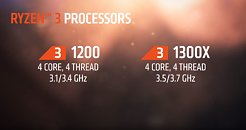
Developers on the Move: NVIDIA Partners Working on External GPU Solutions
At SIGGRAPH 2017, NVIDIA announced it is working with a number of partners towards the development of external graphics enclosures that can power - and increase mobility - of their professional-geared GPU solutions. Namely, NVIDIA has announced external GPU solutions featuring the powerful Titan Xp and Quadro graphics cards. These external GPU solutions are meant to upgrade the capability of notebooks to support new workflows such as video editing, interactive rendering, VR content creation, AI development and more. Such has been enabled by the latest, high-bandwidth Thunderbolt 3 protocol. For the Quadro eGPU program specifically, Nvidia is working with established manufacturers like Sonnet, Magma, Akiti, and Bizon. The company says there are more to come.
Pricing information has not been revealed for now, but Titan Xp can already be ordered, while the Quadro solutions will see availability in a few weeks.
Pricing information has not been revealed for now, but Titan Xp can already be ordered, while the Quadro solutions will see availability in a few weeks.















